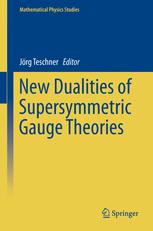

Most ebook files are in PDF format, so you can easily read them using various software such as Foxit Reader or directly on the Google Chrome browser.
Some ebook files are released by publishers in other formats such as .awz, .mobi, .epub, .fb2, etc. You may need to install specific software to read these formats on mobile/PC, such as Calibre.
Please read the tutorial at this link: https://ebookbell.com/faq
We offer FREE conversion to the popular formats you request; however, this may take some time. Therefore, right after payment, please email us, and we will try to provide the service as quickly as possible.
For some exceptional file formats or broken links (if any), please refrain from opening any disputes. Instead, email us first, and we will try to assist within a maximum of 6 hours.
EbookBell Team

0.0
0 reviewsThis book reviews a number of spectacular advances that have been made in the study of supersymmetric quantum field theories in the last few years. Highlights include exact calculations of Wilson loop expectation values, and highly nontrivial quantitative checks of the long-standing electric-magnetic duality conjectures
The book starts with an introductory article presenting a survey of recent advances, aimed at a wide audience with a background and interest in theoretical physics. The following articles are written for advanced students and researchers in quantum field theory, string theory and mathematical physics, our goal being to familiarize these readers with the forefront of current research.
The topics covered include recent advances in the classification and vacuum structure of large families of N=2 supersymmetric field theories, followed by an extensive discussion of the localisation method, one of the most powerful tools for exact studies of supersymmetric field theories. The quantities that have been studied in this way are partition functions, expectation values of line operators, and supersymmetric indices.
The book also reviews recently discovered connections between SUSY field theories in four dimensions and two-dimensional conformal field theory. These connections have a counterpart in relations between three-dimensional gauge theories and Chern-Simons theory; the book’s closing chapters explore connections with string theory.